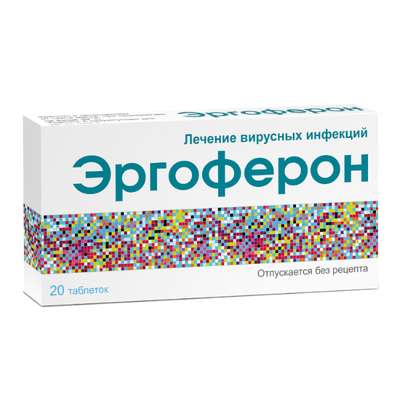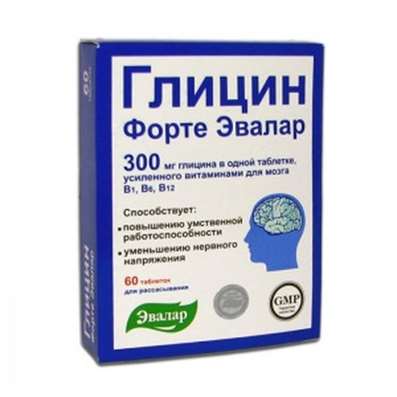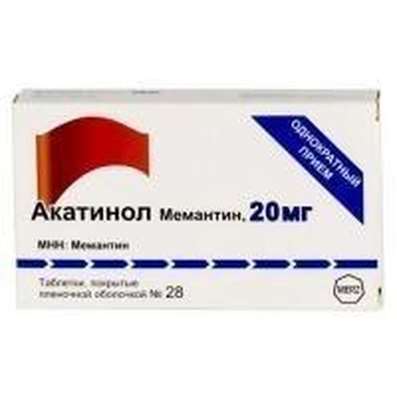Instruction for use: Dimexid
I want this, give me price
Active substance Dimethylsulfoxide
ATX code M02AX03Dimethylsulfoxide
Pharmacological group
dermotropic means
Nosological classification (ICD-10)
G50.0 Trigeminal neuralgia
Neuritis of the trigeminal nerve, Painful tic, Idiopathic neuralgia of the trigeminal nerve, Neuralgia of the trigeminal nerve, Essential neuralgia of the trigeminal nerve, Pain syndrome in trigeminal neuralgia, Painful tic, Trigeminal neuralgia, Neuralgia of the trigeminal nerve
L52 Erythema nodosum
Nodal erythema, Erythema nodosa, Leprosy erythema nodosum
M06.9 Other specified rheumatoid arthritis
Rheumatoid arthritis,Pain syndrome in rheumatic diseases, Pain in rheumatoid arthritis, Inflammation in rheumatoid arthritis, Degenerative forms of rheumatoid arthritis, Children's rheumatoid arthritis, Exacerbation of rheumatoid arthritis, Acute articular rheumatism, Rheumatic arthritis, Rheumatic polyarthritis, Rheumatoid arthritis, Rheumatic polyarthritis, Rheumatoid arthritis, Rheumatoid arthritis of active course, Rheumatoid arthritis, Rheumatoid polyarthritis, Acute rheumatoid arthritis, Acute rheumatism
M19.9 Arthrosis, unspecified
Change in brush with osteoarthritis, Osteoarthritis, Osteoarthrosis, Arthrosis of large joints, Pain syndrome in osteoarthritis, Pain syndrome in acute inflammatory diseases of the musculoskeletal system, Pain syndrome in chronic inflammatory diseases of the musculoskeletal system, Deforming arthrosis, Deforming osteoarthritis, Deforming osteoarthritis of joints, Osteoarthritis in the acute stage, Osteoarthritis of large joints, Acute pain syndrome with osteoarthritis, Post-traumatic osteoarthritis, Rheumatic osteoarthritis, Spondylarthrosis, Chronic osteoarthritis
M25.9 Joint disease, unspecified
Arthropathy, Diseases of the joints, Swelling in the joints, Swelling of the joints, Articular Syndrome, Edema after interventions during sprains
M45 Ankylosing spondylitis
Ankylosing spondylarthrosis, Marie-Strumpel disease, Ankylosing spondylitis, Pain syndrome in acute inflammatory diseases of the musculoskeletal system, Pain syndrome in chronic inflammatory diseases of the musculoskeletal system, Bechterew's disease, Ankylosing spondylitis, Diseases of the spinal column, Rheumatic spondylitis, Bechterew-Marie-Strumpel disease
M54.1 Radiculopathy
Acute sciatica, Radiculopathy, Radiculitis, Radiculitis with radicular syndrome, Acute radiculopathy, Pain syndrome with radiculitis, Subacute radiculitis, Radiculitis, Chronic radiculitis, Diseases of the spinal column
T14.0 Surface injury of unspecified body region
Abrasions, Scratch, Skin Wounds, Wounds of soft tissues, Hematoma, Hematoma of traumatic origin, Hematomas, Hematomas of muscles, Hematomas of soft tissues, Healing of the skin, Bruise, Bruising due to sprains and bruises, Microtrauma, External bruises, Small combing, Superficial hematoma, Superficial damage to the skin and mucous membranes, Subcutaneous hematoma, Post-traumatic hematoma, Post-traumatic disturbance of microcirculation, Skinness of the skin, Traumatic plexus lesions, Injury, Contusion of soft tissues, Joint bruise, Traumatic bruises, Traumatic injury, Primary treatment of surface contaminated wounds, Abrasion, Bruise
T14.3 Dislocation, sprain and damage to the capsular-ligamentous apparatus of the joint of the unspecified area of the body
Painful stretching of muscles, Pain and inflammation in tension, Dislocation of dislocation, Degenerative changes in the ligamentous apparatus, Edema due to sprains and bruises, Edema after interventions for sprains, Damage and rupture of ligaments, The musculoskeletal system is damaged, Damage to ligaments, Damage to the joints, Ligament ruptures, Tendon tendons,Ruptures of the tendons of muscles,Stretching, Crick, Stretching of the muscle, Sprain, Tension of the tendons, Extensions,Stretch muscles, Sprains, Tension of the tendons, Injury of the musculoskeletal system, Injuries to the joints, Injuries of capsule-articular tissues, Injuries of the osteoarticular system, Injuries to ligamentsInjuries to the joints, Joint wounds, Stretching of the ligamentous apparatus, Habitual stretching and tearing
T14.9 Injury unspecified
Pain syndrome after trauma, Pain syndrome with injuries, Pain syndrome with trauma and after surgery, Pain in case of injury, Pain of a traumatic nature, Joint pain with injuries, Postoperative and post-traumatic pain, Pain in case of injury, Pain of a traumatic origin, Severe pain syndrome of traumatic origin, Deep tissue damage, Deep scratches on the trunk, Closed injury, Minor Household Injuries, Minor skin damage, Violations of the integrity of soft tissues, Uncomplicated trauma, Extensive traumatic injury, Acute pain syndrome of traumatic origin, Edema with trauma, Postponed sports injuries, Post-traumatic pain, Soft tissue injuries, Joint wounds, Sports injuries, Injury, Traumatic pain, Traumatic pains, Traumatic infiltrate,Injuries to sports
Composition
Gel for external use 100 g
active substance:
dimethoxide (dimethylsulfoxide) 25 g
auxiliary substances: methyl parahydroxybenzoate (nipagin) - 0.05 g; propyl parahydroxybenzoate (nipazole) 0.013 g; carmellose sodium (sodium carboxymethylcellulose) - 2 g; purified water - up to 100 g
Description of dosage form
Colorless or with a yellowish tinge transparent gel with a weak specific odor.
pharmachologic effect
Pharmacological action - anti-inflammatory.
Pharmacodynamics
Anti-inflammatory agent with local analgesic and anti-inflammatory effect. Has a moderate antiseptic and fibrinolytic effect.
Dimethyl sulfoxide inhibits inflammatory tissue infiltration. In addition, dimethyl sulfoxide promotes normalization of fibrinogenesis processes, increases microcirculation in tissues, inhibits aggregation of erythrocytes, increases activity of phagocytes, suppresses chemotaxis of neutrophils and reduces the content of circulating immune complexes.
Penetrates through the skin, mucous membranes, the cellular wall of bacteria (increases their sensitivity to antibiotics) and other biological membranes, increases their permeability for drugs. The drug is low toxicity.
Pharmacokinetics
When the drug is applied dimethylsulfoxide is detected in the blood serum after 8-15 minutes, the maximum content being observed after 2-8 hours. As a rule, after 30-36 h, dimethylsulfoxide in the blood serum is no longer detected. Dimethyl sulfoxide does not accumulate. With topical application of the drug, dimethyl sulfoxide penetrates into the joint cavity, binds to proteins in the blood and tissues.
Dimethyl sulfoxide is excreted from the body through the kidneys unchanged and in the form of oxidation products - dimethyl sulfone and dimethyl sulfate; as well as in the form of a reduced product (dimethyl sulfide) is released with exhaled air.
Indication of Dimexid
It is used to relieve the pain syndrome in the complex therapy of the following diseases and conditions:
rheumatoid arthritis;
Bechterew's disease;
deforming osteoarthritis;
arthropathy;
radiculitis;
neuralgia of the trigeminal nerve, etc .;
for the treatment of bruises;
damage to ligaments;
traumatic infiltrates;
when treating erythema nodosum.
Contraindications
hypersensitivity to Dimexid or other components of the drug;
severe liver and kidney damage;
angina pectoris;
myocardial infarction;
severe atherosclerosis;
different types of stroke;
glaucoma, cataract;
coma;
pregnancy;
lactation period;
children under 12 years.
Due to the fact that the Dimexid preparation can enhance not only the activity, but also the toxicity of some drugs, care should be taken when prescribing it simultaneously with other drugs.
Side effects
In the process of using the drug, contact dermatitis, garlic odor of exhaled air, increased skin pigmentation, allergic reactions, erythematous rashes, dry skin, mild burning sensation can be observed. Some patients do not perceive the smell of the drug (nausea, urge to vomit), in rare cases, bronchospasm is possible. If any of the side effects indicated in the description have worsened or any other side effects not indicated in the description have occurred, you should inform the doctor about it.
Interaction
Compatible with heparin, antibacterial drugs, NSAIDs.
Increases the sensitivity of microorganisms to aminoglycoside and β-lactam antibiotics, chloramphenicol, rifampicin, griseofulvin.
Dosing and Administration
Outwardly. Adults and children over 12 years of age, the drug is applied a thin layer on the affected area 1-2 times a day. Duration of treatment is 10-14 days. Repeated courses can be conducted not later than 10 days.
Overdose
Symptoms: increased dose-related side effects.
Treatment: the drug should be discarded, rinsed damaged area, remove the drug.
special instructions
Given the possibility of individual intolerance to the drug, it is recommended to carry out a drug test for tolerance to it. For this, a thin layer of gel is applied to the skin of the elbow fold. The appearance of sharp reddening and itching indicates an increased sensitivity to the drug Dimexid.
If there are allergic reactions during the treatment, the drug is stopped, H1-histamine receptor blockers are prescribed.
Form of issue
Gel for external use, 25%. In aluminum or plastic tubes of 20, 30, 50, 100, 150, 200, 250 or 500 g in a jar with a lid of HDPE or in a vial with a lid of HDPE. Each tube is placed in a cardboard box.
From 5 to 20 cans or bottles in a box of cardboard (for hospitals).
Conditions of leave from pharmacies
Without recipe.
storage conditions
At a temperature of no higher than 25 ° C.
Keep out of the reach of children.
Shelf life of Dimexid
2 years.
Do not use after the expiry date printed on the package.

 Cart
Cart





